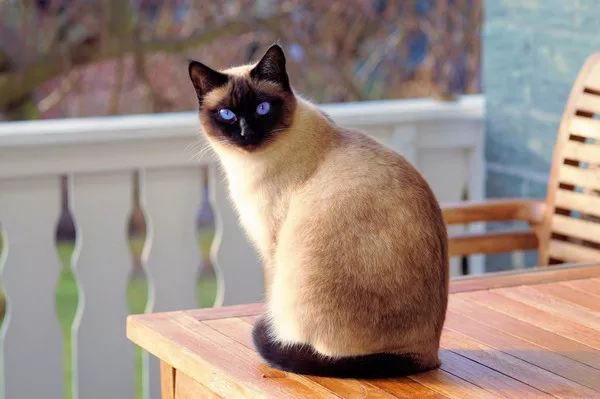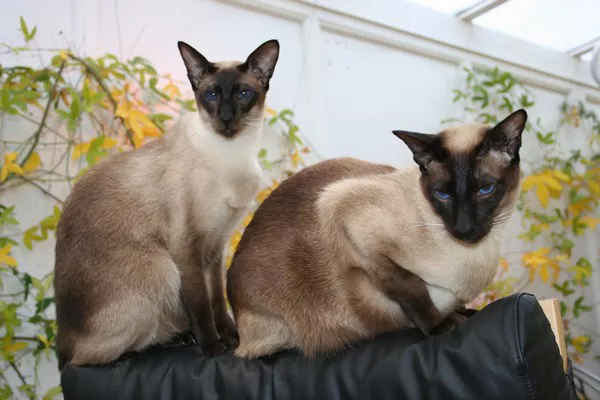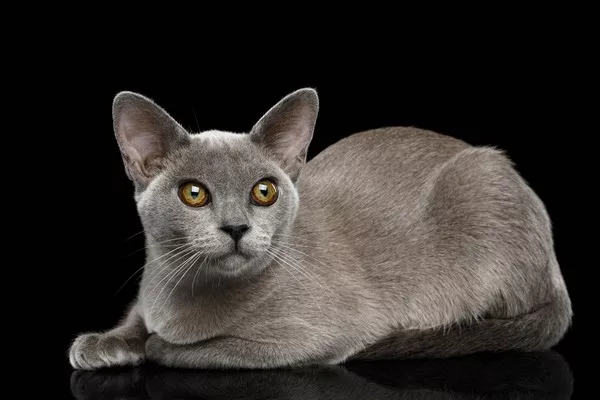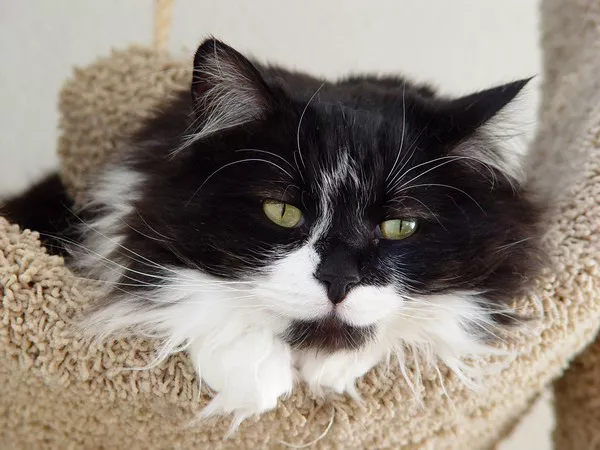Burmese cats are renowned for their striking appearance and affectionate nature. Originating from Burma (now Myanmar), these cats have become a favorite among cat enthusiasts worldwide. This article delves into the behavior of Burmese cats, exploring their unique characteristics, temperament, social interactions, training, health considerations, and tips for owners. Understanding these facets of Burmese cat behavior helps potential and current owners provide a loving, supportive environment for their feline companions.
Origins and Physical Characteristics
To appreciate the behavior of Burmese cats, it is useful to first understand their origins and physical characteristics.
History and Origins:
Burmese cats trace their lineage to a single cat named Wong Mau, brought to the United States from Burma in the 1930s.
Breeding programs established in the U.S. led to the development of the modern Burmese cat, recognized for its distinct appearance and friendly demeanor.
Physical Traits:
Burmese cats have a muscular, medium-sized body with a rounded head, expressive eyes, and a short, glossy coat.
Their coat color can range from sable (dark brown) to champagne, platinum, and blue, with sable being the most common.
Temperament and Personality
Burmese cats are known for their distinctive temperament and personality traits, making them a beloved breed among cat owners.
Affectionate Nature:
Burmese cats are incredibly affectionate and crave human companionship. They are often described as “velcro cats” because they love to stick close to their owners.
These cats enjoy being held and cuddled, often seeking out laps to sit on and offering head butts to show affection.
Playfulness and Energy:
Burmese cats are highly energetic and playful. They retain kitten-like behavior well into adulthood, enjoying interactive play with toys and games.
Their curiosity and intelligence make them keen explorers of their environment, often investigating new objects and areas in the home.
Social Behavior:
Burmese cats are highly social animals, not only with humans but also with other pets. They tend to get along well with other cats and even dogs, given proper introductions.
They are known to be quite vocal, often engaging in “conversations” with their owners through a variety of meows and purrs.
Loyalty and Attachment:
This breed forms strong bonds with their human families, often choosing a favorite person to whom they show extra affection.
Burmese cats dislike being left alone for long periods and can become anxious or depressed without regular human interaction.
Interaction with Family Members
Understanding how Burmese cats interact with family members, including children and other pets, is crucial for potential owners.
Children and Burmese Cats:
Burmese cats are generally excellent with children, displaying patience and tolerance. Their playful nature aligns well with the energy of young children.
It is important to teach children how to handle cats gently to avoid accidental injuries and to ensure positive interactions.
Other Pets:
Burmese cats typically coexist well with other pets, including dogs and other cats. Their social and friendly nature makes them more adaptable to multi-pet households.
Proper introductions and gradual acclimatization are key to fostering harmonious relationships between Burmese cats and other pets.
Training and Intelligence
Burmese cats are highly intelligent and trainable, capable of learning a variety of behaviors and tricks.
Litter Training:
Burmese cats generally adapt quickly to litter training. Using a clean, accessible litter box and positive reinforcement encourages good litter habits.
See Also: Is Cornish Rex Hypoallergenic?
Behavioral Training:
Due to their intelligence, Burmese cats can be trained to perform tricks, use scratching posts, and follow commands. Consistency and positive reinforcement, such as treats and praise, are effective training methods.
Addressing undesirable behaviors, such as scratching furniture or jumping on countertops, should be done with patience and positive strategies rather than punishment.
Interactive Play:
Engaging Burmese cats in interactive play is essential for their mental and physical stimulation. Toys that mimic prey, such as feather wands and laser pointers, are particularly effective in satisfying their hunting instincts.
Health and Wellness Considerations
Maintaining the health and wellness of Burmese cats is vital for ensuring their longevity and quality of life.
Common Health Issues:
Burmese cats are generally healthy but can be predisposed to certain genetic conditions, such as craniofacial abnormalities and diabetes mellitus.
Regular veterinary check-ups, vaccinations, and preventative care are essential to monitor and maintain their health.
Diet and Nutrition:
Providing a balanced, high-quality diet is crucial for the overall health of Burmese cats. Consulting with a veterinarian to determine the best diet based on age, weight, and health status is recommended.
Monitoring weight is important, as Burmese cats can be prone to obesity, which can lead to other health issues.
Grooming Needs:
Burmese cats have low grooming requirements due to their short coat. Regular brushing helps to keep their coat shiny and reduces shedding.
Routine dental care, including brushing and professional cleanings, is essential to prevent dental diseases.
Creating an Enriching Environment
Creating an enriching environment that meets the physical and mental needs of Burmese cats is crucial for their well-being.
Physical Stimulation:
Providing climbing structures, scratching posts, and interactive toys helps keep Burmese cats physically active and engaged.
Regular play sessions with owners foster a strong bond and prevent boredom-related behaviors.
Mental Stimulation:
Puzzle toys, interactive feeders, and training sessions are excellent ways to provide mental stimulation for Burmese cats.
Rotating toys and introducing new challenges regularly helps keep their environment interesting and engaging.
Recognizing and Addressing Behavioral Issues
While Burmese cats are generally well-behaved, it is important to recognize and address any behavioral issues that may arise.
Common Behavioral Problems:
Separation Anxiety: Due to their strong attachment to humans, Burmese cats may exhibit signs of separation anxiety when left alone for extended periods. Providing interactive toys and companionship can help alleviate anxiety.
Destructive Scratching: Encouraging the use of scratching posts and regularly trimming claws can prevent damage to furniture and household items.
Behavioral Modification Techniques:
Positive reinforcement is the most effective method for modifying undesirable behaviors. Rewarding desired behaviors with treats, praise, or playtime reinforces good habits.
Consistency in training and addressing behaviors promptly helps prevent the development of persistent issues.
The Lifespan and Aging of Burmese Cats
Burmese cats have a relatively long lifespan, often living into their late teens or early twenties with proper care.
Aging Considerations:
As Burmese cats age, they may experience changes in behavior, mobility, and health. Regular veterinary care becomes even more critical to manage age-related conditions.
Adjustments to diet, exercise routines, and living environments may be necessary to accommodate the needs of senior Burmese cats.
Quality of Life:
Ensuring a high quality of life for aging Burmese cats involves providing a comfortable and safe environment, regular health check-ups, and continued social interaction.
Monitoring for signs of pain or discomfort and addressing them promptly enhances the well-being of senior cats.
Conclusion
Burmese cats are a unique and affectionate breed, known for their social nature, intelligence, and playful demeanor. Understanding their behavior, needs, and health considerations helps potential and current owners provide the best care for these charming felines. By fostering a loving, stimulating environment and addressing their physical and emotional needs, owners can ensure that their Burmese cats lead happy, healthy lives. Whether you are a new or experienced cat owner, the insights provided in this article offer valuable guidance for nurturing a strong bond with your Burmese cat and enjoying the companionship of this remarkable breed.

![Do Birman Cats Like to Cuddle? [Revealed!]](https://www.catsmeowweb.com/wp-content/uploads/2023/06/burmese-cat-14.webp)










![Do Birman Cats Like to Cuddle? [Revealed!]](https://www.catsmeowweb.com/wp-content/uploads/2023/06/burmese-cat-31.webp)












